The Golden Dawn or Thoth Method

Difficulty: Complicated
Note: Tarot decks that use reversed cards such as the Rider-Waite do not work well with this spread, which was designed to be read using elemental dignity.
The Golden Dawn spread is best suited for use with the bifrost Tarot and especially the Book of Thoth, as these decks are meant to be read a certain way with the court cards. Princes and queens represent actual men and women connected with the matter, while princesses generally represent ideas; thoughts or opinions, and knights represent arrival or departure of a matter depending on the direction faced.
In this tarot spread, particular attention should be paid to a card's exact position in relation to its neighbours. Whether the neighbour cards bear the same energy (suit) determines whether a card is considered well-dignified or ill-dignified. Opposite suits ill-dignify each other, while other suits are considered friendly. Tarot cards of the same suit or element strengthen each other.
As with other tarot spreads, it is important to count the cards' tendencies, such as whether there is a lot of one particular suit or number pattern. The patterns reveal special messages. Having several majors present indicates higher forces at work, several cups suggest strong emotions, etc.
Card #1 represents the reader and the nature of the topic at hand.
Cards #2 & #3 are read in extension of #1 to further comprehend the nature of the topic.
The two sets of three tarot cards at the top of the spread represent chronological sets of events. The current path as it would unfold naturally is represented by cards #4, #8, & #12. The alternate path that could be taken is represented by cards #13, #9, & #5. However, if the reader gets the feeling these cards are telling them they go together, then the alternate path is to be considered an extension of the current path, and to be read chronologically in this order: #4, #8, #12, #13, #9, #5. Just keep in mind: this is only if the two paths seem particularly similar.
Cards #14, #10, & #6 shed light upon the psychological undertones of the current issue.
Cards #7, #11, & #15 represent the influences of karma and destiny beyond the reader's control. These cards suggest adapting to this, as fate.
Your Golden Dawn Reading
| The Alternate Path (or Extension of Current Path) |
Your Current Path |
|||||
XVII – The Star |
II – The High Priestess |
V – The Pope |
I – The Magician |
VIII – Justice |
XIV – Temperance |
|
| The Querent | ||||||
0 – The Fool |
XV – The Devil |
XII – The Hanged Man |
||||
| The Psychological Basis | Karma | |||||
XI – Strength |
IX – The Hermit |
XIII – Death |
VII – The Chariot |
XVI – The Tower |
XVIII – The Moon |
|
The Querent
cards represent the querent and the nature of the topic at hand. The first card (in the center of the spread) represents the very core of the matter, and the other two cards around it are added to it in order to further comprehend the nature of the topic.
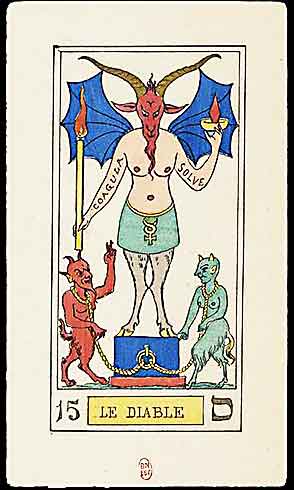
The Devil represents temptation, materialism, and the enslavement of desires. It points to the darker aspects of the self, where one is bound by addictions, fears, or unhealthy attachments.
Symbolism: The Devil is depicted as a horned figure with a monstrous appearance, standing over two chained figures. The chains are loose, indicating that freedom is possible, but the figures are unaware of their power to escape. The card represents self-imposed limitations.
In Relationships: Unhealthy attachments, temptation, or toxic relationships. A call to break free from negative patterns.
In Work: Materialism, greed, or feeling trapped in a situation. The need to release limiting behaviours.
Spiritually: The need to confront personal fears, addictions, or attachments that block spiritual growth.
When ill-dignified: Excess, obsession, or being enslaved by negative influences or desires.
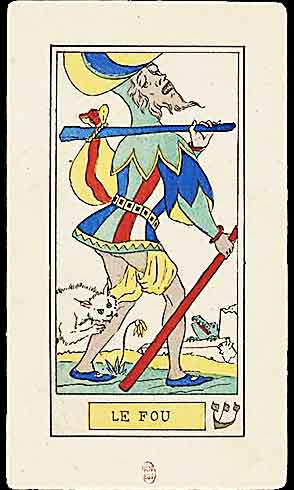
The Fool represents freedom, spontaneity, and new beginnings. This card signifies the start of an adventurous journey, full of potential but also uncertainty. He reminds us to embrace the unknown with optimism and an open heart.
Symbolism: The Fool carries a staff and a small sack, symbolising untapped potential and the lessons to be learned. The playful animal at his feet represents instinct, loyalty, and sometimes, the forces that pull us in conflicting directions. His carefree attitude invites a leap into the unknown.
In Relationships: New romantic beginnings, playfulness, and spontaneity, but be wary of impulsive actions.
In Work: A time for exploration, openness to unconventional opportunities, and embracing the unfamiliar.
Spiritually: Embarking on a journey of self-discovery, embracing the unknown with faith.
When ill-dignified: Recklessness, lack of foresight, and the dangers of ignoring consequences.
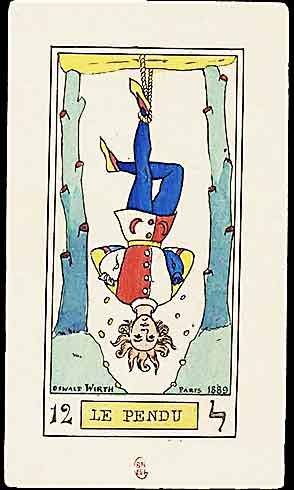
The Hanged Man symbolises suspension, sacrifice, and a shift in perspective. This card represents moments when one must release old beliefs or attachments to gain deeper insight and understanding.
Symbolism: The Hanged Man is depicted hanging upside down, suspended by one foot. His serene expression reflects acceptance and surrender, as he finds wisdom through a change in perspective. His hair resembles a crown symbolising enlightenment and the illumination gained through this pause.
In Relationships: A period of reflection, where relationships may need to be reassessed. It could also suggest a sacrifice for love or personal growth within relationships.
In Work: A time for letting go of old ways of thinking, re-evaluating goals, or waiting patiently for a shift in circumstances.
Spiritually: A time for surrender and spiritual enlightenment, achieved through a different perspective.
When ill-dignified: Stagnation, indecision, or an unwillingness to make necessary sacrifices for growth.
Your Current Path
cards represent your current path as it would unfold naturally. These cards are read in chronological order from left to right.
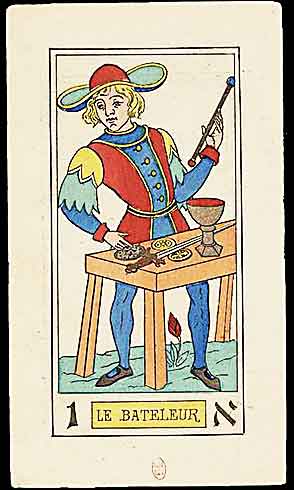
The Magician signifies mastery, skill, and the power to shape reality. This card represents harnessing resources and directing one's energies towards success. The Magician embodies the potential to manifest desires into tangible form.
Symbolism: He stands before a table with tools representing the four elements: a cup (Water), a sword (Air), a coin (Earth), and a wand (Fire). His raised wand symbolises the connection between spirit and matter, and his hat, shaped like an infinity symbol, signifies endless potential.
In Relationships: A time to use charm, wit, and initiative to build or strengthen relationships.
In Work: Opportunity, success, and the power to manifest goals through skill and action.
Spiritually: The Magician teaches the importance of intention, focus, and using one's talents for higher purposes.
When ill-dignified: Deception, manipulation, or scattered energy. Warning against using one's power for selfish gain.

Justice represents balance, fairness, and accountability. This card calls for the resolution of disputes and alignment with truth and fairness in all areas of life.
Symbolism: Justice sits with a sword in one hand and scales in the other, symbolising impartiality, truth, and balance. Her crown and steady gaze emphasise her authority over matters of fairness.
In Relationships: A balanced relationship or the need to resolve unresolved issues with fairness and integrity.
In Work: Legal matters, contracts, or decisions that require careful evaluation.
Spiritually: A reminder to live truthfully, aligning actions with higher principles.
When ill-dignified: Dishonesty, imbalance, or the refusal to accept responsibility for one's actions.
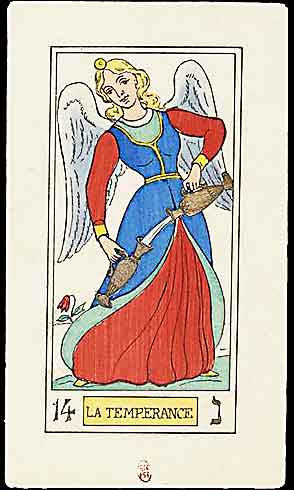
Temperance represents balance, moderation, and the art of harmonising opposites. This card suggests a period of a careful blending of energies, creating harmony between diverse aspects of life.
Symbolism: Temperance is shown pouring liquid between two cups, symbolising the blending of forces or energies. Her wings suggest a spiritual connection, and her alchemical knowledge signifies a harmonious outcome. The card teaches the importance of moderation.
In Relationships: A balanced, harmonious relationship or the need for patience and moderation in love.
In Work: A time to blend different skills or approaches to find success. Collaboration and diplomacy are key.
Spiritually: A call for balance, peace, and alignment between the spiritual and material realms.
When ill-dignified: Excess, imbalance, or an inability to find middle ground.
The Alternate Path
cards represent the alternate path that you could choose to take in lieu of the Current Path. However, if the cards that come up seem to indicate that they go along with the Current Path, these three cards should be interpretted not as an Alternate Path, but as a chronological extension of the Current Path (also read from left to right).
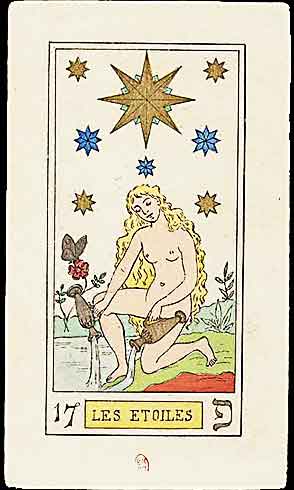
The Star represents hope, inspiration, and divine guidance. This card signifies moments of clarity, healing, and the connection to higher aspirations.
Symbolism: The Star is a nude woman pouring water onto the ground and into a pool, symbolising the flow of spiritual energy. A star shines brightly above her, representing guidance and inspiration. The peaceful, open landscape conveys hope and renewal.
In Relationships: A time of healing, hope, and emotional renewal. This card suggests trust and faith in the potential for deep connection.
In Work: Inspiration, new opportunities, and alignment with your true calling.
Spiritually: A period of spiritual renewal, where divine guidance leads the way towards greater fulfilment.
When ill-dignified: Hopelessness, lack of faith, or feeling disconnected from one's spiritual path.
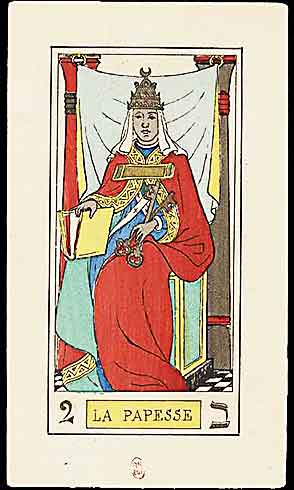
The High Priestess represents intuition, wisdom, and hidden knowledge. She invites introspection and reminds us to trust our inner voice in uncovering truths that are not immediately apparent.
Symbolism: Seated on a throne with a book of wisdom and keys, the High Priestess represents access to esoteric knowledge. The curtains behind her suggest mystery and the boundary between the conscious and unconscious realms.
In Relationships: Emotional depth, secrets, or a need for patience and understanding.
In Work: Hidden opportunities, deep research, or learning emerging from within.
Spiritually: Trust your intuition and explore spiritual truths beyond the material world.
When ill-dignified: Ignorance, repressed emotions, or manipulation behind the veil of mystery.

The Pope represents tradition, spiritual guidance, and morality. He symbolises the need for structure, passing sacred knowledge, and alignment with established systems or mentors.
Symbolism: Seated on a throne with a triple-cross sceptre and a raised hand in blessing, the Pope embodies divine wisdom. The twin pillars behind him suggest the gateway to higher knowledge and understanding.
In Relationships: A traditional, committed relationship or the need to realign with moral principles.
In Work: Seek guidance from a mentor or adhere to established structures for success.
Spiritually: The Pope calls for a return to faith, ethics, and divine wisdom in all aspects of life.
When ill-dignified: Dogmatism, hypocrisy, or blind adherence to outdated traditions.
The Psychological Basis
cards shed light upon the psychological undertones of the current problem.
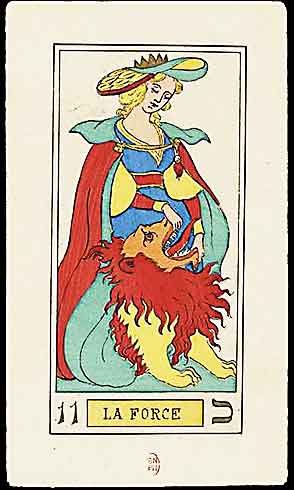
Strength symbolises inner strength, courage, and emotional mastery. It represents the power of compassion and grace in overcoming challenges, rather than brute force.
Symbolism: A woman calmly subdues a lion, symbolising the triumph of inner strength over raw power. Her serene expression and gentle hands show mastery through patience and understanding.
In Relationships: Strength to overcome emotional challenges through understanding and patience.
In Work: Success through resilience, determination, and tact, not through force.
Spiritually: Mastery of inner impulses and alignment with higher virtues.
When ill-dignified: Weakness, impatience, or misuse of power in challenging situations.
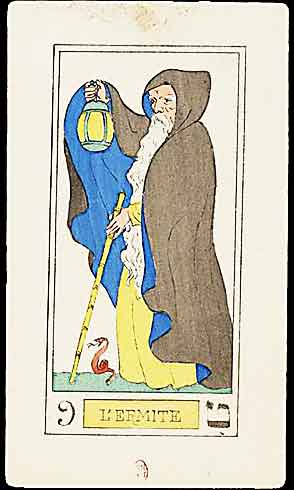
The Hermit represents wisdom, introspection, and the search for spiritual clarity. He calls for a retreat into solitude to find deeper meaning.
Symbolism: The Hermit holds a glowing lantern, symbolising divine wisdom. His staff represents the guidance he offers others, while the snake hints at his persuasiveness. His solitary journey through a barren landscape reflects the pursuit of enlightenment.
In Relationships: A time for introspection and finding deeper meaning.
In Work: A need for solitude, mentorship, or stepping back to reassess goals.
Spiritually: A journey of spiritual discovery and the search for deeper truths.
When ill-dignified: Isolation, withdrawal, or stagnation in one's journey.
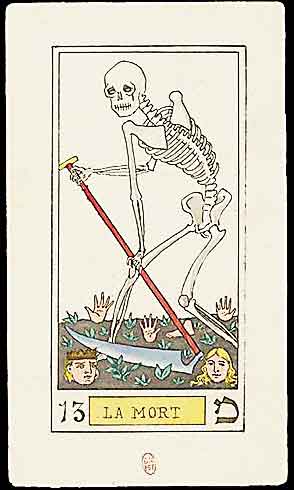
Death signifies transformation, endings, and new beginnings. Rather than literal death, it represents the end of a phase in life, making way for rebirth and regeneration.
Symbolism: Death is portrayed as a skeleton reaping the harvest with a scythe, signifying purification and the promise of growth. Parts of the fallen lie before them, representing what must be left behind for transformation to occur. The card's imagery reminds us that change is inevitable.
In Relationships: An ending or significant change, clearing the way for fresh developments or perspectives.
In Work: The end of a project, job, or phase of life, leading to the start of something new and transformative.
Spiritually: A transformative time where old beliefs or habits must be released for personal growth.
When ill-dignified: Resistance to change, stagnation, or fear of transformation.
Karma
These cards represent the influences of karma and destiny that are beyond your control. They suggest adapting to this fate.
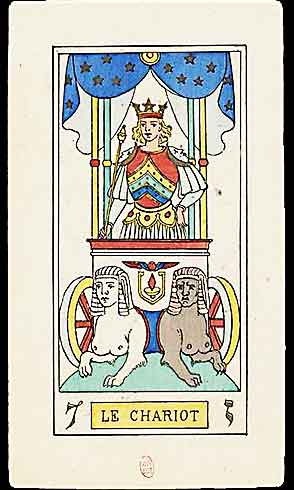
The Chariot represents victory, control, and determination. It signifies the ability to overcome obstacles and navigate life's challenges through focus and willpower.
Symbolism: The charioteer rides a chariot drawn by two sphinxes, symbolising opposing forces that must be balanced. The chariot is adorned with symbols of conquest, and the figure wears a crown, signifying authority and triumph.
In Relationships: A relationship driven by effort and mutual determination, or one that requires balance and compromise.
In Work: Triumph through perseverance, conquering challenges with focus.
Spiritually: A journey of self-mastery, overcoming inner struggles, and moving forward with purpose.
When ill-dignified: Recklessness, lack of direction, or being pulled in conflicting directions.
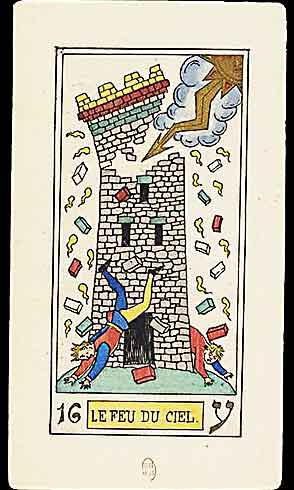
The Tower signifies sudden upheaval, revelation, and the breaking down of false structures. This card represents moments of crisis or dramatic change that lead to profound transformation.
Symbolism: The Tower is struck by lightning, causing it to collapse. Figures fall from the tower, symbolising the suddenness and unexpected nature of the event. The crown-like top falling from the tower suggests that pride or false beliefs are being shattered.
In Relationships: A sudden revelation or event that shatters illusions, leading to change or the breakdown of a relationship.
In Work: Unexpected disruption, the destruction of old structures, or a breakdown of outdated systems.
Spiritually: A wake-up call that challenges beliefs or systems, leading to greater clarity and spiritual growth.
When ill-dignified: Crisis, destruction without transformation, or a refusal to accept change.

The Moon signifies illusion, intuition, and the subconscious mind. It represents the mystery of the unknown, hidden fears, and the need to trust inner guidance while navigating uncertainty.
Symbolism: The Moon is depicted with two dogs howling at the moon, symbolising the pull of primal instincts. A crayfish crawls from the water, representing the subconscious emerging into consciousness. The path leads towards a distant horizon, symbolising the journey through confusion to clarity.
In Relationships: Illusions in relationships, emotional confusion, or hidden feelings. Trust your intuition to navigate these uncertain waters.
In Work: Uncertainty or the need to trust your instincts. Hidden factors may influence the situation.
Spiritually: A time to confront fears, listen to your inner voice, and seek clarity in moments of doubt.
When ill-dignified: Deception, illusion, or being misled by false hopes or unclear situations.